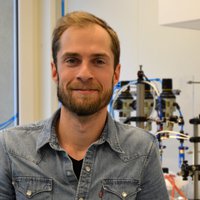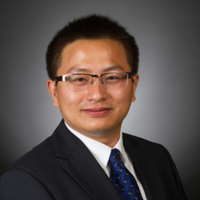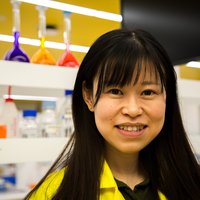The Encyclopedia of Nature was Linxiao Zhu’s
favorite book as a child and the mysterious universe described by the book piqued his
curiosity. This coupled with an environment that championed education, Zhu was fueled with passion for knowledge, science, and innovation.
After being admitted to the Department of
Physics at the University of Science and Technology of China in 2006, Linxiao
Zhu benefited from a strong academic atmosphere. He then accepted admissions for his doctoral degree from the Department of Applied Physics at Stanford University, hoping
to explore the forefront of science and technology.
In the early days of his Ph.D., inspired by
his supervisor, he became interested in the theoretical research of
nanophotonics.
During his research, Linxiao Zhu realized
that thermal radiation could also be treated as an infrared light. This meant that he could apply photonics theory and control methods of thermal radiation and
explore the possibility of controlling thermal radiation with nano-photonic
devices.
Based on these ideas, he found that the
theory he studied had important applications, so he began to transition from
theoretical research to experiments on energy conversion.
One of the interesting experiments is
sky-based cooling technology. His collaborators and he designed a multilayer photonic
structure that reflects 96% of sunlight through nanophotonic design. In the
test, the object was able to passively cool to 5 °C below the ambient air
temperature even under direct sunlight. In subsequent studies, he further boosted
the temperature reduction to 42 °C.
This innovation has opened up a new field
for cooling technology. The technology behind it has received patents and
startups are trying to commercialize it.
"Linxiao is a remarkable scientific
talent and it is quite unusual to see someone that is so outstanding in both
theory and experiment," said Professor Shanhui Fan, Linxiao Zhu's doctoral supervisor, speaking highly of him.
After receiving his Ph.D. in 2016, Linxiao
Zhu went to the University of Michigan and joined the mechanical engineering
laboratory led by Professor Reddy and Professor Meyhofer to study laser-free
refrigeration and thermophotovoltaics.
His breakthrough research led to the realization
of laser-free solid-state refrigeration, which only requires applying a reverse
voltage bias to a common commercial infrared light emitting diode to cool other
devices. This is the first experimental realization in this field.
This refrigeration technology has a wide
range of applications in wearable devices, robotics and aerospace, and could
also be integrated into circuits and system-on-chips to cool electronic
components directly.
To make better use of energy, Linxiao Zhu
also focused on new thermal photovoltaic technology and designed a new type of
thermal photovoltaic cell. By reducing the distance between a thermal emitter
and a thermal photovoltaic cell to the nanoscale, he increased the electricity
generation rate by 40 times.
In the future, Linxiao Zhu plans to
continue research on energy conversion technologies. For example, he plans to
explore solid state refrigeration using forward-biased photodiodes, and to try
innovative ideas such as cooling and power generation with renewable energies.
"Whenever I encounter a new problem, I
often try to analyze the problem like a newbie. Whenever I come up with a
solution, I often ask myself if there is room for further
improvement," said Linxiao Zhu. It is this persistence and constant
introspection that led him to today's achievements.




